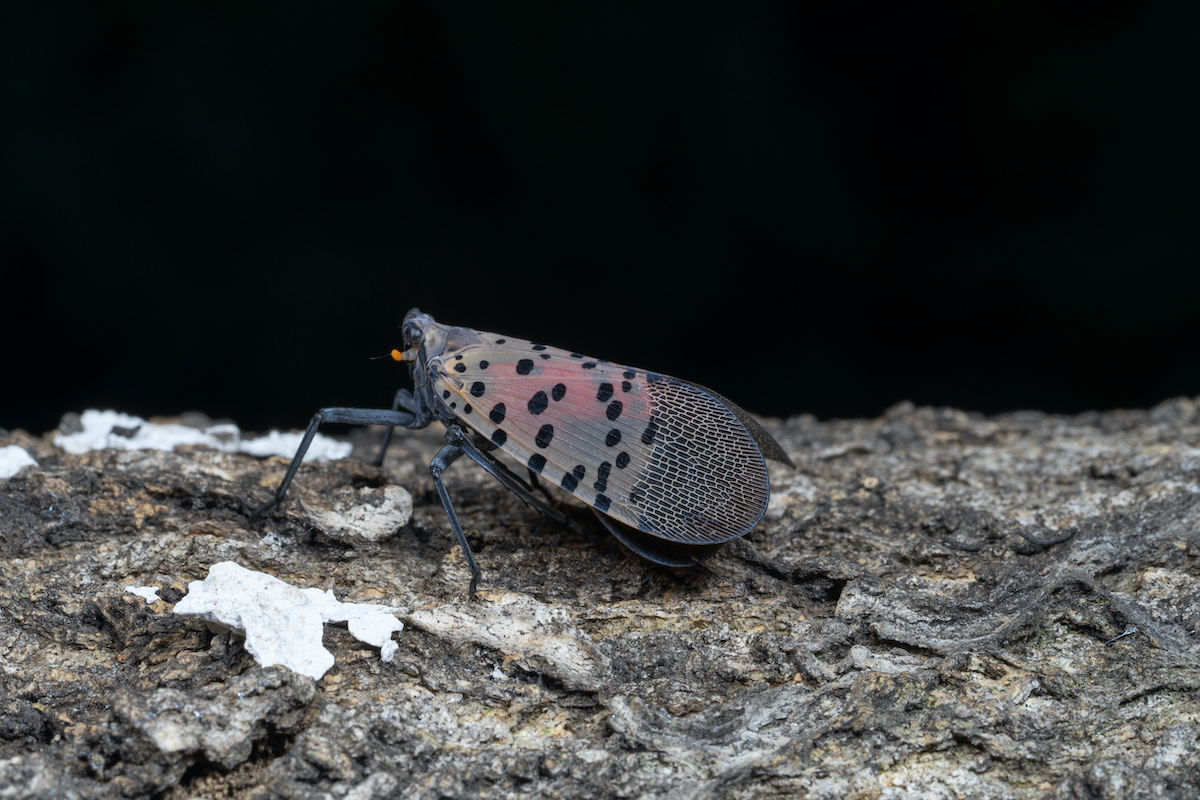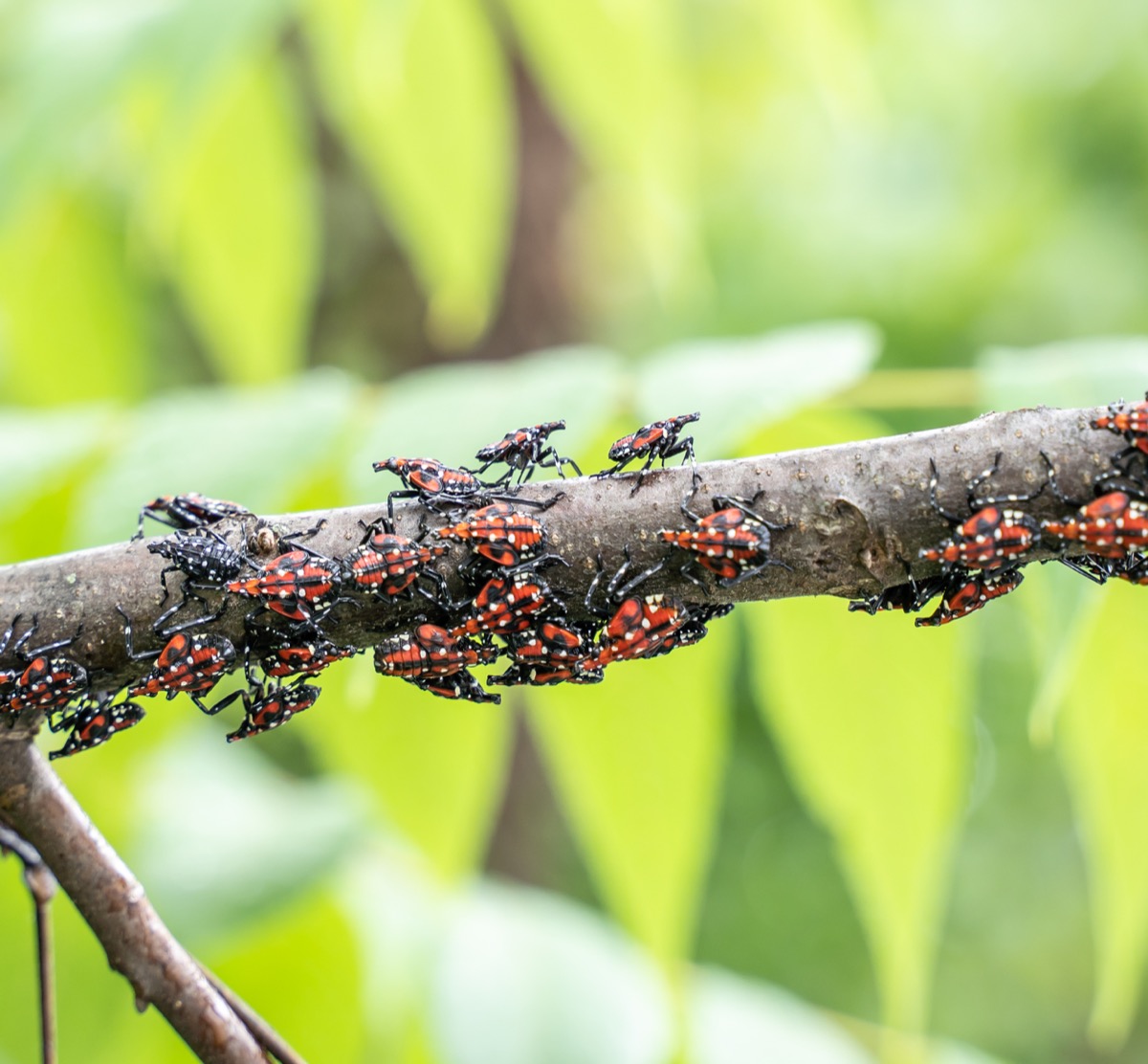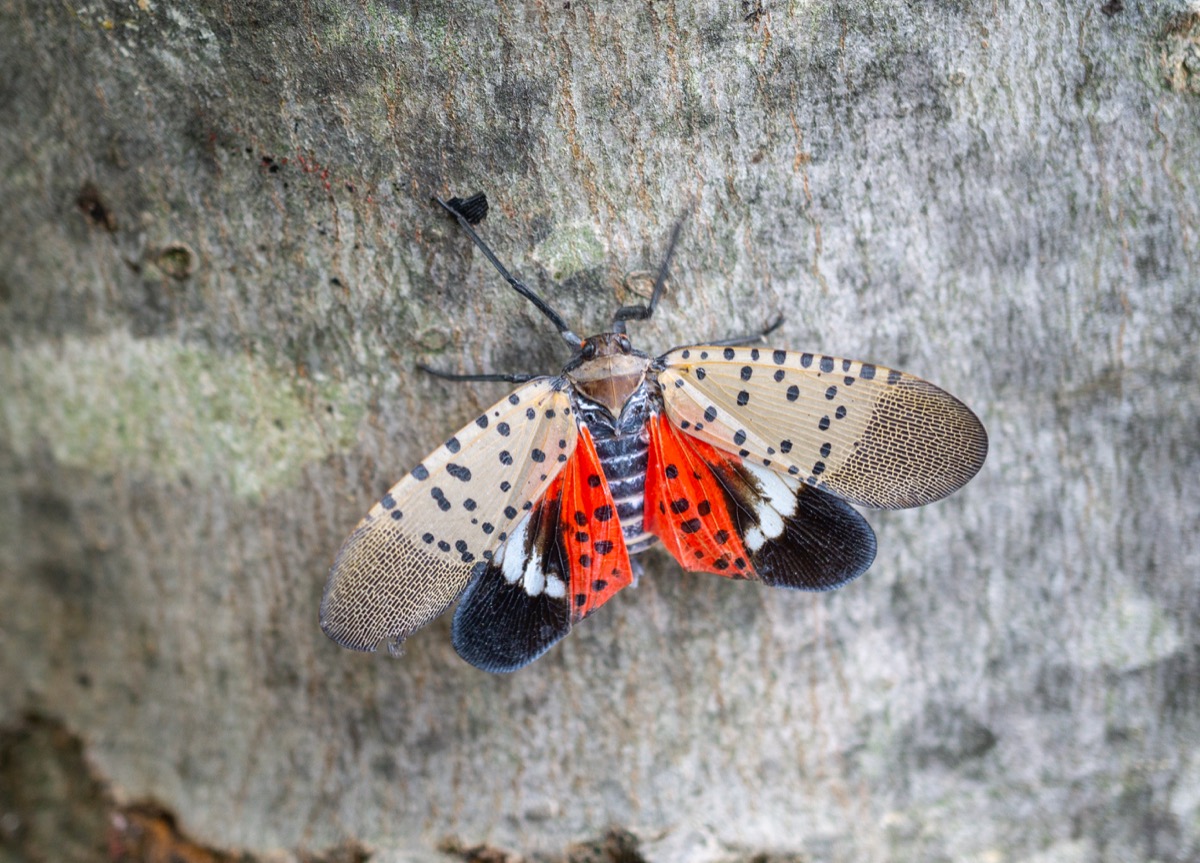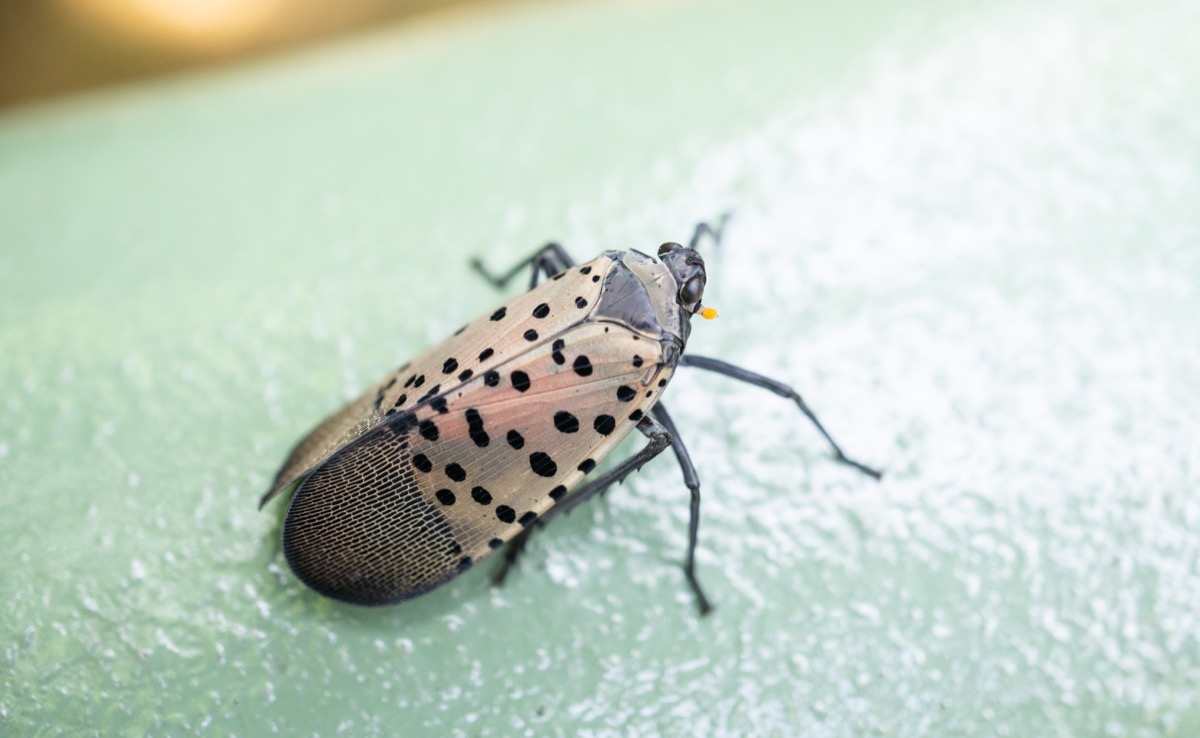If You See This Bug, Crush It Immediately, USDA Says

As much as bugs may make your skin crawl, the fact of the matter is, most creepy crawlers are harmless. As the professionals at Vulcan Termite and Pest Control in Alabama advise, “Any bug can be a nuisance, especially if they are invading your home, but most insects actually don’t cause much harm.” But there are always some exceptions. According to the U.S. Department of Agriculture’s (USDA) Animal and Plant Health Inspection Service, there’s a short list of 20 invasive insect species you should be on the lookout for, and one of them is starting to make a comeback. In fact, one state even has a campaign to “stomp it out.” Read on to find out what bug you should be wary of and why the USDA is giving you permission to kill it.
RELATED: If You Live in These States, Beware of This Dangerous Caterpillar, USDA Says.
The spotted lanternfly has only been in the U.S. since 2014, but it’s done a lot of damage.

According to the USDA, the spotted lanternfly, which is native to China, was first detected in Pennsylvania in Sept. 2014. It feeds on a wide range of fruit and trees, and is quick to move around, which earned it the nickname the “hitchhiker bug.” The insect “spreads easily by hitchhiking on vehicles or laying its eggs on most any flat surface—like the sides of box cars, propane tanks, and equipment stored outside,” the USDA says.
Officials note the spotted lanternfly has the potential to “seriously impact the country’s grape, orchard, and logging industries.” If it’s not contained, the spotted lanternfly could cost the Pennsylvania economy at least $324 million a year and more than 2,800 jobs, according to a study by economists at Penn State.
RELATED: If This Animal Is Acting Overly Friendly, Call Authorities, Experts Say.
The USDA says people should crush, squash, or stomp on the spotted lanternfly if they see them.

The spotted lanterfly is about one-inch long and one-half inch wide, with wings that are light brown or scarlet with black spots. The nymphs are black with white spots and turn red right before becoming adults (as seen here). The spotted lanterfly’s egg masses are yellowish-brown and just before they hatch, you’ll find them covered with a gray, waxy coating.
The USDA’s advice on what to do if you see a spotted lanternfly is clear: “Stop, scrape, squash.” “Crush nymphs and adult insects. Scrape egg masses into a plastic bag containing hand sanitizer or rubbing alcohol to kill them,” they say.
Spotted lanternflies have been found in nine states.

In addition to Pennsylvania, which has seen the bulk of the spotted lanternflies, they’ve also been spotted in New Jersey, Delaware, Maryland, Virginia, West Virginia, New York, Connecticut, and Ohio.
The Pennsylvania Department of Agriculture has been encouraging people to get rid of these insects. “Any efforts you make in destroying the spotted lanternfly or its egg masses help reduce populations on your property and in your community,” they point out.
Similarly, the New Jersey Department of Agriculture says that while these bugs “will not sting or bite humans or animals,” the invasive pest must be stopped. “If you see a spotted lanternfly, help us stomp it out!”
RELATED: For more up-to-date information, sign up for our daily newsletter.
Some areas have had to quarantine due to the spotted lanternfly.

To stop its spread, some local officials have issued quarantines for counties where the spotted lanternflies’ presence has been confirmed. Both New Jersey and Pennsylvania issued quarantines last summer.
Officials say that if you live in one of the quarantined counties, you should inspect your vehicle for any spotted lanternflies or their eggs before driving, close your windows when you park your car outside since “the spotted lanternfly and its nymphs can enter vehicles unsuspectedly,” and kill any spotted lanternflies you see.
RELATED: If You See This Bug, You Need to Vacuum It Up Immediately, Experts Say.